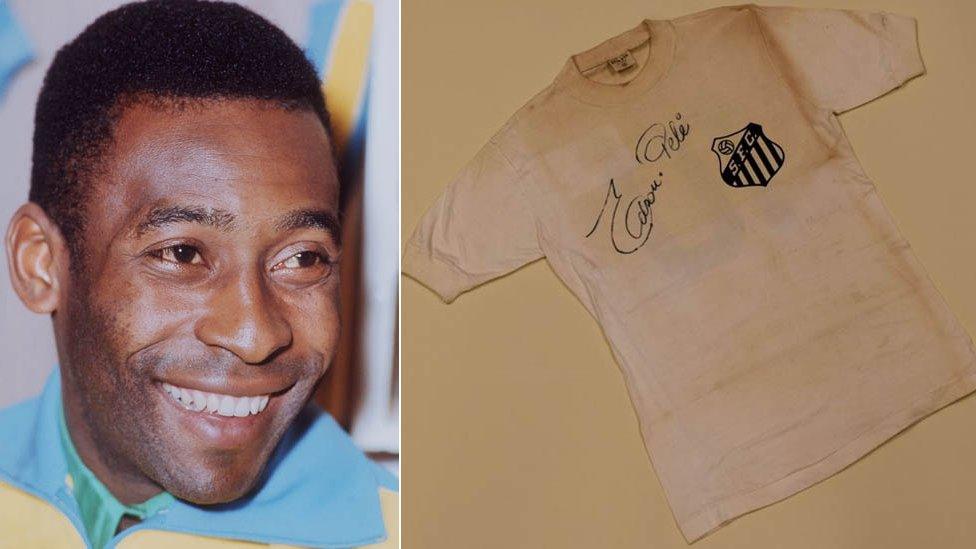Rugby rule book from 1851 sells for £13,000 at auction
- Published
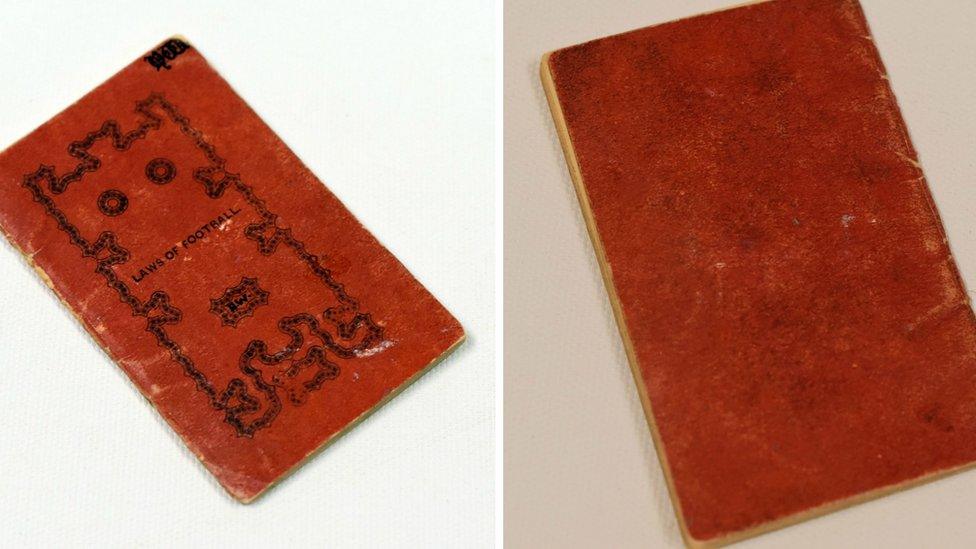
A rugby rule book dating back to 1851 has sold for £13,000 at auction.
It measures 8.4cm by 5cm (3.3in by 1.9in) and is called The Laws of Football as Played at Rugby School.
The inside cover says H Waddington, October 3rd 1851 and it is believed to have belonged to William Henry Waddington, the former prime minister of France, who went to Rugby School.
It was auctioned at Rogers Jones & Co in Cardiff on Friday with a guide price of £1,000 - £2,000.
Printed by Crossley and Billington of Rugby, it was found by a former book store owner in a depository.
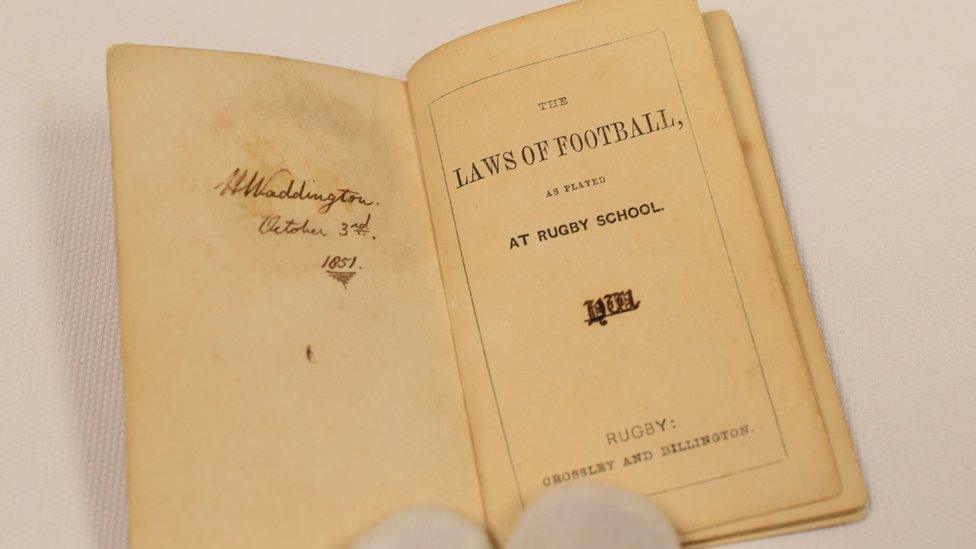
It is 17 pages long, contains 33 rules and says it should be regarded "rather as a set of decisions on certain disputed points in football, than as containing all the laws of the game, which are too well known to render any explanation necessary to Rugbaeans".
Auctioneer Ben Rogers Jones said the book was discovered in a huge stock of rugby books and was like finding "a needle in a hay stack".
"It's such a rare item it's difficult to put a price on it but it was sold to a private collector in the UK who was very, very pleased," he said.
"In 25 years of our business, it is the most valuable book we have sold and probably the smallest."
Before the auction he said he did not believe an original copy or later printed copy from the mid 19th Century had ever been brought to auction.
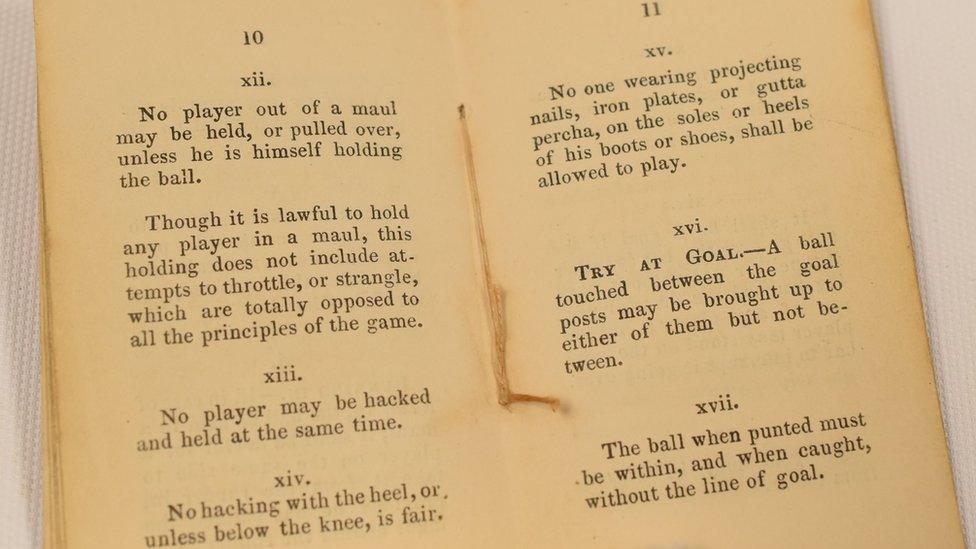
Rugby rules in 1851
No one wearing projecting nails, iron plates, or gutta percha (a protective material), on the soles or heels of his boots or shoes, shall be allowed to play
All matches are drawn after five days, or after three days if no goal is kicked
No hacking with the heel, or unless below the knee, is fair
The ball must be place-kicked and not dropped - and if it touch two hands the try will be lost
No player may take the ball out of the close, i.e behind the line of trees beyond the goal
- Published9 October 2015
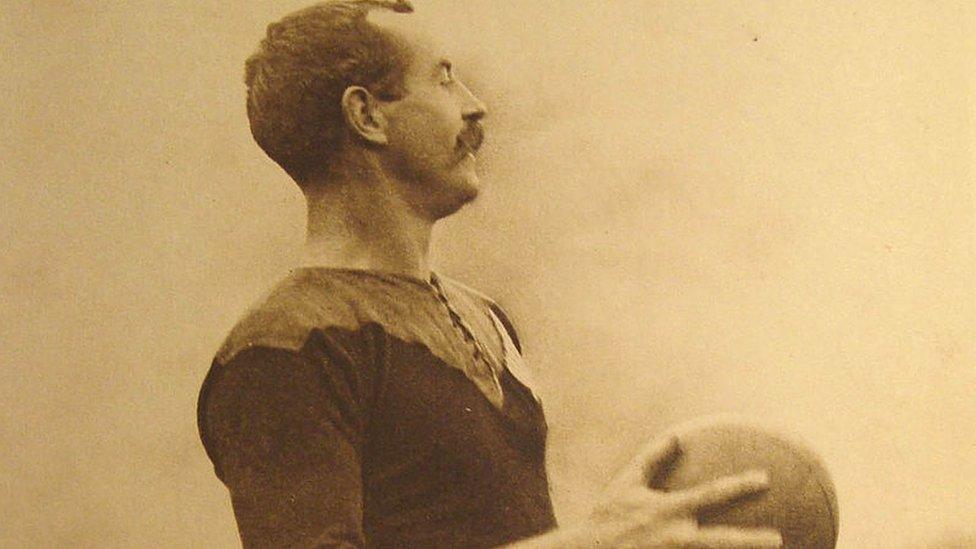
- Published12 February 2016
